According to the Zoogeographical or Faunal division, Zhangjiajie belongs to the Central China Sub-region of the Oriental Region. The complex terrain, various ravines, deep canyons, mild climate, abundant rainfall, and dense forests provide the best possible natural conditions for the reproduction of animals and plants. Overall, there are a lot kinds of animals and plants in Zhangjiajie. According to a survey conducted by the South China Wildlife Investigation Team of the Chinese Academy of Sciences: within the Wulingyuan area, there are roughly 22 orders, 58 families and 149 species of terrestrial spine wildlife in total, of which birds account for 46.9%, beasts account for 28.9%, reptiles accounts for 16.1% and amphibians accounts for 8.1%.
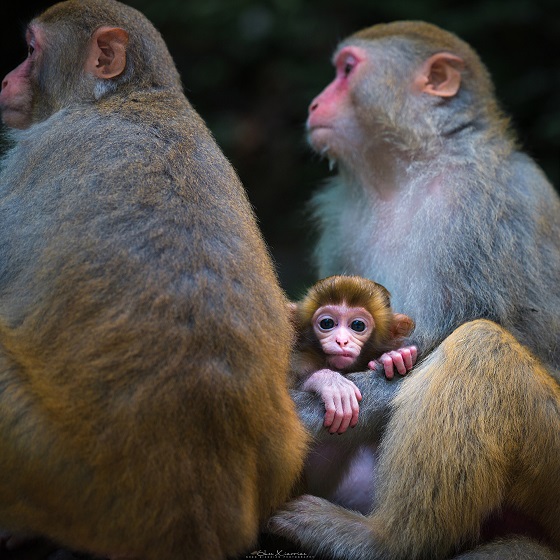 ☝ Monkeys in Zhangjiajie National Forest park
☝ Monkeys in Zhangjiajie National Forest park
The leopard, the clouded leopard, the pygmy slow Loris, the yellow-bellied pheasant, the white-necked and long-tailed pheasant, the giant salamander, the five step snake and so on that can be found in Zhangjiajie are rare and endangered animals which are listed as the first class protected animals at China national level. The second-level protected animals at national level that can be found in Zhangjiajie are: the macaques, the stump-tailed macaques, the sumen sheep, the pangolin, the black bear, the giant lynx, the little lynx, the otter, the forest musk, the sambar, the jackal, the mandarin duck, the finches, the sparrow hawk, the red-bellied pheasant, the white-crested pheasant, the brown-winged crow, the cuckoo, the tiger frog and so on. Besides those rare animals, Zhangjiajie has commonly found animals including deer, the bison, the wild goat, the wild boar, the wild rabbit, the wild cat, the muddy pig, the jackal, the fox, the civet cat, the bat, the flying squirrel, the weasel, the squirrel, the frog , the spiny-bellied frog, just to name a few.
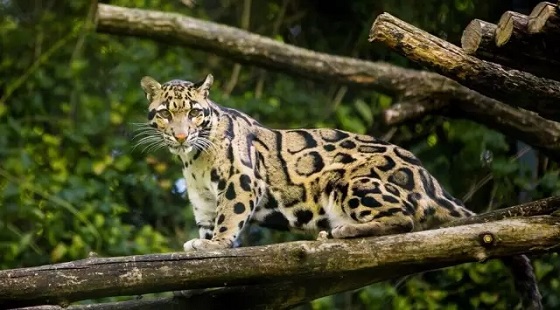 ☝ the Clouded Leopard
☝ the Clouded Leopard
in total, there are approximately 40 species of reptiles in Zhangjiajie, such as the grass scorpion, the skink, the four legged snake, the black snake, the fruit snake, the water snake, the white snake, the red snake, the Trimeresurus stejnegeri, the two-headed snake, the gold ring snake, the bungarus multicinctus, the five steps snake, the cobra and so on.
As an old saying goes, "March 3rd , snakes come out from the mountain; September 9th, snake hide in the holes." The snakes hibernate when the temperature is low. If visitors travel to Zhangjiajie under the cold weather, there is no need for them to worry about the possibilities of encountering the snakes. On the other hand, what bothers visitors the most through out the year is not actually the snake, but rather the monkey. However, the good thing is that compared with monkeys, snakes are more sensitive to the sound caused by activities of human beings and they try to avoid disturbing human beings once they detect the sound by moving away.
 ☝ the Black Bear
☝ the Black Bear
At the same time, as Zhangjiajie is a scenic spot full of visitors all over the world for most of the times during the year, snakes are well aware of the overwhelmed population of mankind and try not to come out most of the time during the daytime. In addition, as the roads in the scenic areas in Zhangjiajie are mostly stone-paved with very little overgrown trails, the probability of tourists encountering snakes is very small as long as people do not deliberately walk into the places which are less traveled, dark and wet. When under very rare cases that a visitor does encounter a snake while having fun, please stay calm and do not panic, as most snakes do not intend to harm or deliberately attack human beings on their own as long as visitors do not have intention to attack them firstly.
Zhangjiajie is well known as the kingdom of birds. Within the scenic areas, visitors can hear the chirping of birds no matter where they go. Based on the statistics provided by the forestry department, there are roughly 90 species of birds in Zhangjiajie region. There are many type of rare birds that worth to be noticed. They are : the red-bellied pheasant, the rainbow pheasant, the alectoris chukar, the cuckoo, the red-footed falcon, and the silver-eared mesia.
Zhangjiajie also has commonly-seen birds such as eagles, sparrows, hawks, golden eagles, swallows, mallards, pheasants, Chinese bamboo partridge, chukars, crakes, Chinese copper pheasants, mandarin ducks, wild herons, cormorants, oriental turtle doves, Chinese francolins, yellowbirds, mynahs, Chinese hwameis, white cranes, grey cranes, crows, jays, magpies, sparrows, owls, Chinese bulbuls, light-vented bulbuls, sunbird, woodpeckers, eurasian hoopoes, the common pheasants, the common cuckoos, silver-earned mesias, amur paradise flycatchers and so on.
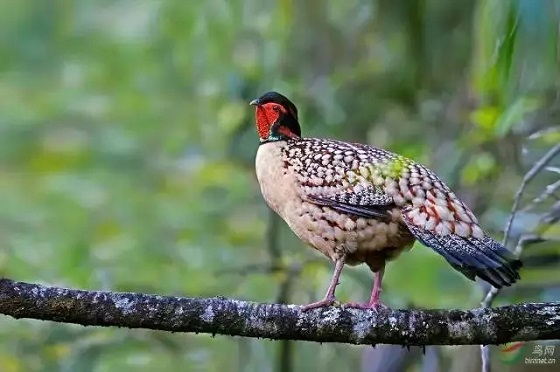 ☝ The golden pheasant,or the Chinese pheasant
☝ The golden pheasant,or the Chinese pheasant
In Zhangjiajie region, there are roughly 82 species of fish in 7 orders, 22 families and 55 genera, including 53 species in cyprinidae family, 5 species in Haliotidae family, 6 species in Haliotis family, 4 species in Siluridae family and 14 species from other 10 families. The majority of fish types that can generate economic benefits are carps, grass carps, black carps, bighead carps, black amur breams, Wuchang breams, white amur breams, the Barbel chub, Xenocypris, Xenocypris davidis, yellow eels, Onychostoma simas, rock carps, opsariichthys bidens, silver driftfish, rhodeus sinensis, Abbottina rivularis and so on, totaling roughly 30 species . These fishes mainly live in Lishui River as well as its primary and secondary tributaries.
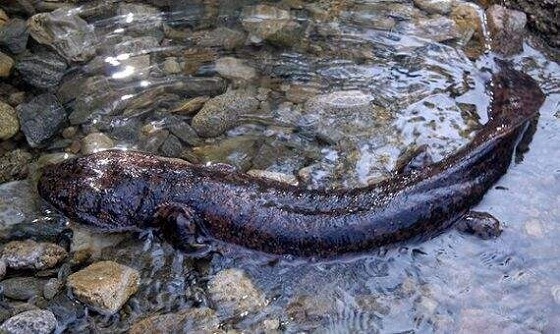 ☝ the giant salamander
☝ the giant salamander
It is worth mentioning that the national level Zhangjiajie Giant Salamander Nature Reserve located at the eastern part of Wuling Mountain Range is the place where the major four river systems of Hunan province including Xiang, Zi, Yuan, and Li originated. The giant salamander or so called baby crying fish likes to hide in dark holes that have constant temperature and the nature reserve in the deep mountain is no doubt an ideal place for the giant salamander to live in. Though after countless years of evolution, the dinosaur has extinguished, the giant salamander survives at the end for their unique living habits .
Insects love to live in Zhangjiajie. There are roughly 200 different kinds of insects. Visitors will be accompanied by these beautiful elves regardless where they go. These insects are mainly bees, katydids, the grasshoppers, ants, cicadas, crickets, mantises, frogs, fireflies, earthworms, cockroaches, dragonflies, spiders, millipedes, centipedes, snails, butterflies, clouded Apollo butterflies, and so on.
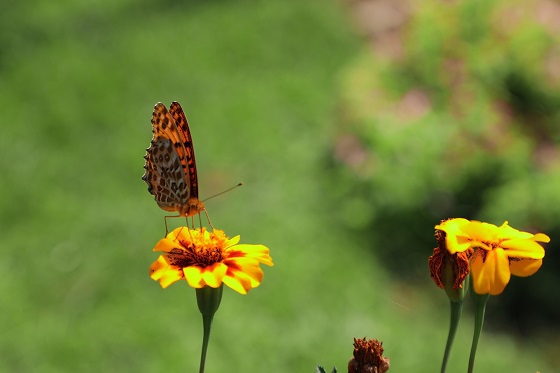 ☝ the butterfly
☝ the butterfly
The most interesting animal in Zhangjiajie should be monkey. Parks of Zhangjiajie have ideal living conditions for monkeys as here grow innumerable tress bringing abundant natural fruits. In total there are thousands monkeys in the area. They are quite silly and cute at the same time. One time, some visitors saw the monkeys catching fish in the shallow water. To make fun of the moneys, one visitor threw a small stone at them. Unexpectedly, this action made the monkey king furious and it fought back by throwing back a small fish. The visitor thought it was fun teasing the monkey so he threw another small pebble to the monkeys. Surprisingly, the monkey gang threw back several fishes as a revenge. Finally, the visitors went back home with many fishes.
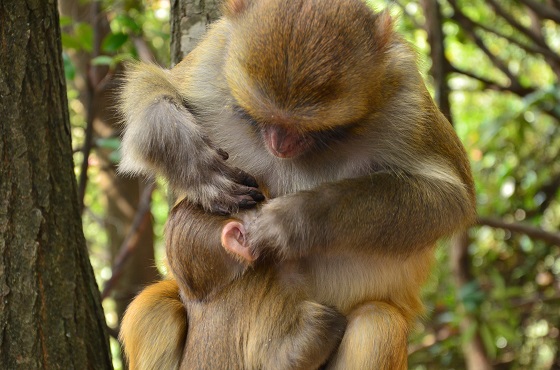 ☝ Monkeys in Zhangjiajie National Forest park
☝ Monkeys in Zhangjiajie National Forest park
There are also funny stories about the bears. One day, there was a chubby bear suddenly fell from a tree. His mouth was spitting foams and he was also panting. Why did the bear fall? Did the bear try to steal the honey from a tree and that's probably why it fell off? Interestingly, the bear ended up standing up slowly and tried hard to climb up the tree again. However, when he was about to reach the top of the tree, he loosed his hand intentionally and fell heavily on the ground again. What was he trying to do? An experienced hunter gave the answer: bears are naturally gluttonous and do not like to do exercises. As the fat accumulates and the bodies turn thick, they become too big in size to get into the hole. That's the reason why they used the "fallen fat" method to lose weight on their own.